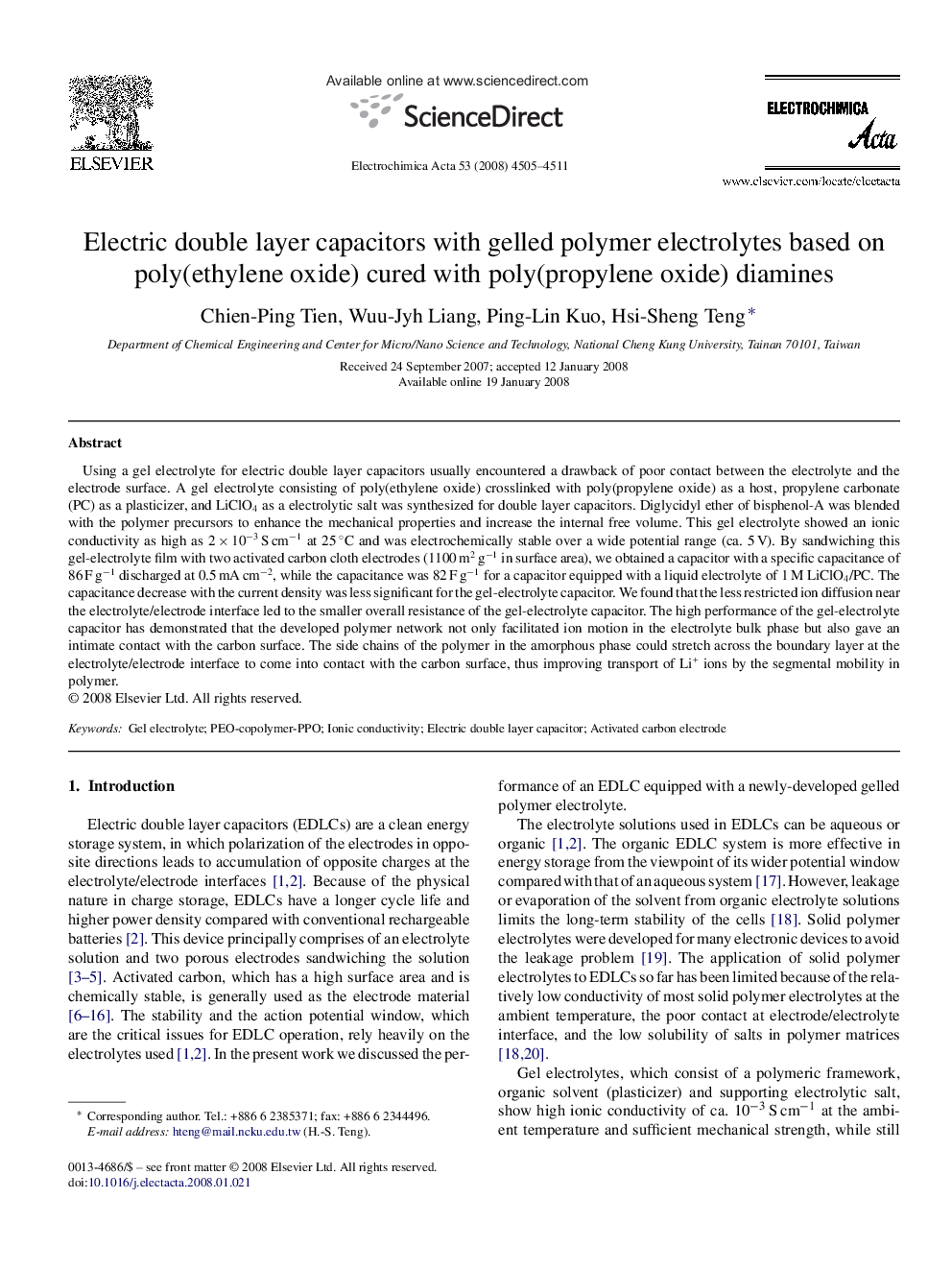| کد مقاله | کد نشریه | سال انتشار | مقاله انگلیسی | نسخه تمام متن |
|---|---|---|---|---|
| 192529 | 459744 | 2008 | 7 صفحه PDF | دانلود رایگان |

Using a gel electrolyte for electric double layer capacitors usually encountered a drawback of poor contact between the electrolyte and the electrode surface. A gel electrolyte consisting of poly(ethylene oxide) crosslinked with poly(propylene oxide) as a host, propylene carbonate (PC) as a plasticizer, and LiClO4 as a electrolytic salt was synthesized for double layer capacitors. Diglycidyl ether of bisphenol-A was blended with the polymer precursors to enhance the mechanical properties and increase the internal free volume. This gel electrolyte showed an ionic conductivity as high as 2 × 10−3 S cm−1 at 25 °C and was electrochemically stable over a wide potential range (ca. 5 V). By sandwiching this gel-electrolyte film with two activated carbon cloth electrodes (1100 m2 g−1 in surface area), we obtained a capacitor with a specific capacitance of 86 F g−1 discharged at 0.5 mA cm−2, while the capacitance was 82 F g−1 for a capacitor equipped with a liquid electrolyte of 1 M LiClO4/PC. The capacitance decrease with the current density was less significant for the gel-electrolyte capacitor. We found that the less restricted ion diffusion near the electrolyte/electrode interface led to the smaller overall resistance of the gel-electrolyte capacitor. The high performance of the gel-electrolyte capacitor has demonstrated that the developed polymer network not only facilitated ion motion in the electrolyte bulk phase but also gave an intimate contact with the carbon surface. The side chains of the polymer in the amorphous phase could stretch across the boundary layer at the electrolyte/electrode interface to come into contact with the carbon surface, thus improving transport of Li+ ions by the segmental mobility in polymer.
Journal: Electrochimica Acta - Volume 53, Issue 13, 20 May 2008, Pages 4505–4511